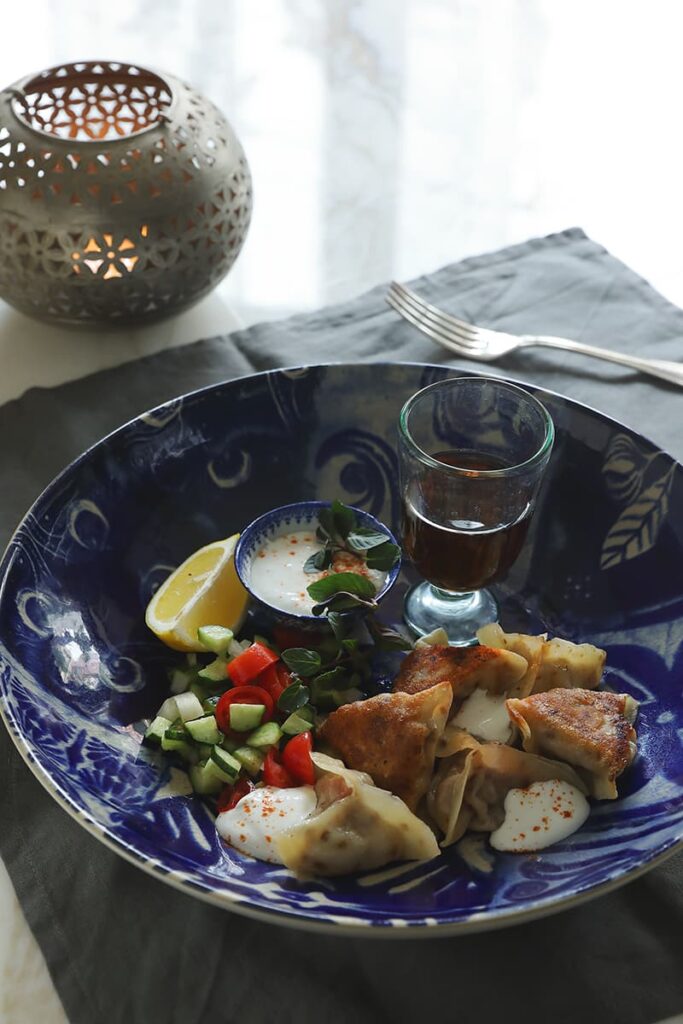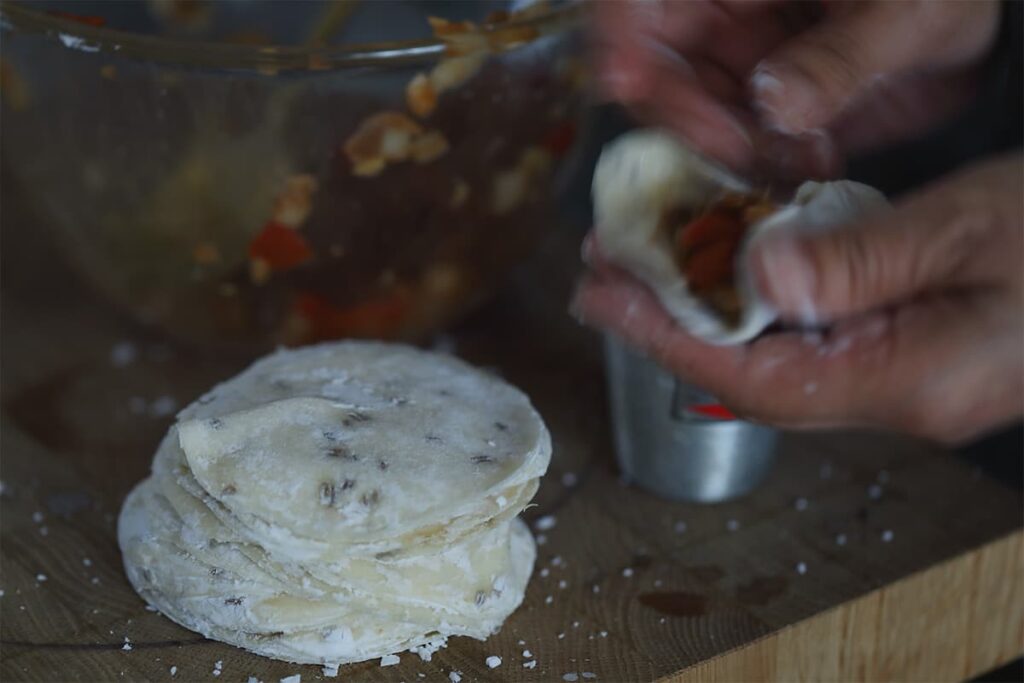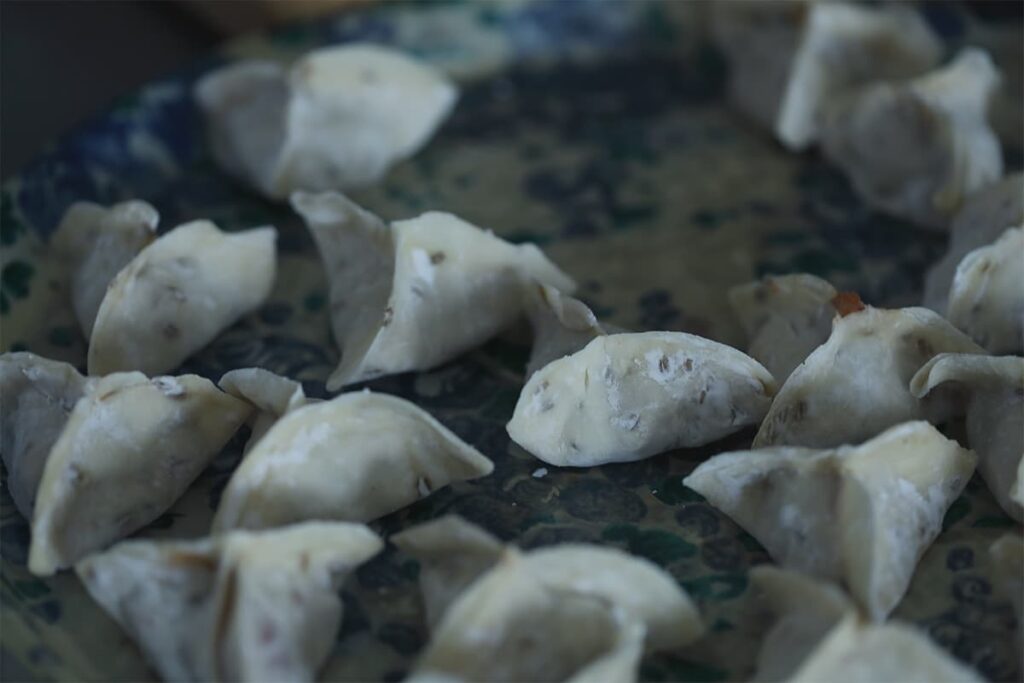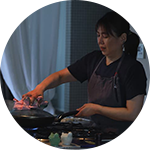トルコ編
Feature|2024.04.24

「旅する餃子」第2回目はトルコ編。
アジアとヨーロッパの交差点として、古くから栄えてきたトルコ。
長い歴史を経て、オスマン帝国として名を馳せ、文化・芸術も発展。
そんなトルコに餃子があったとしたら。


世界三大料理のひとつに数えられるトルコ料理。
トルコといえばトプカピ宮殿やブルーモスクなど、建築の傑作が多くある国。また、タイルや絨毯、キリム、細密画などの伝統芸術も有名。食も負けておらず、トルコ料理はフランス料理・中国料理ととともに世界三大料理のひとつに数えられている。日本人にも知られているのは「ドネル・ケバブ」や「シシ・ケバブ」。あと忘れてはならないのが「バルック・エクメーイ」という、日本ではサバサンドと呼ばれているサンドイッチ。日本のサバと種類が違うのか、トルコのサバは脂がのっているうえに臭みがなく、サンドイッチにぴったりで、これがすこぶる美味しい。
トルコは宗教上の理由で豚肉を食べることは禁止されている。昔から羊肉が好まれ、また地中海やエーゲ海、黒海があることから海産物も豊富。豆類を使った料理も多い。バザール(市場)で驚くほどの多種な香辛料を扱う店を見ると、トルコがいかに食に貪欲かがわかる。
そんなトルコを妄想しながら松井がつくった餃子は、さてどんな味なのか。
Turkey is celebrated for its architectural wonders like the Topkapi Palace and the Blue Mosque, as well as traditional arts such as tiles, carpets, kilims, and miniature paintings. Its cuisine ranks among the world’s top culinary traditions, alongside French and Chinese cuisines. Among its dishes familiar to Japanese audiences are doner kebab, shish kebab, and balik ekmek (known in Japan as “saba sando” or mackerel sandwich), noted for its rich, non-fishy flavor.
Due to religious practices, pork is avoided in Turkey, with a preference for sheep meat and a bounty of seafood from the Mediterranean Sea, Aegean Sea, and Black Sea. The country’s cuisine also features many legume dishes, and the variety of spices sold in its bazaar markets attests to the Turks’ passion for food.
Against this rich culinary backdrop, which unique flavors will Chef Matsui infuse into her Turkish-inspired dumplings?

エスニックな味わいと地中海な爽やかさがある。
「旅する餃子」のトルコ編 は “ケバブ餃子” 。そもそもトルコにはマントゥという餃子のような食べ物があるが、それとはまったく違う松井のオリジナルだ。というわけで 、〜もし、トルコ人が餃子をつくったら〜。 たぶん、クミンを多く使用するのではないかということで、皮にも餡にもクミンシードが混ぜてある。餡にはさらに、ラム肉とトマト、玉ねぎ、ニンニクが入っていて味わい豊か。ソースはヨーグルトにニンニクと塩を混ぜた、クセのある酸味が楽しめるもの。付け合わせにはトマトときゆうりのサラダ。これにはオリーブオイルとレモン、塩がかかっていて、玉ねぎも入っている。
〜Afiyet olsun〜
クミンの独特な薫りが食欲をそそる。まずソースをつけずに食すと、なるほど、これはケバブだ。そしてソースをつけて食べる。ヨーグルトの爽やかな酸味の奥にエスニックが見え隠れする、不思議な美味しさ。ビールがすすむという餃子の必須条件もクリアしていて、2個目を食べる頃にはすっかり “ケバブ餃子”のファンになっている。イスタンブールを想いながら餃子を食べる、それもまた乙なもの。
The Turkish edition of Traveling Dumplings features kebab dumplings. While Turkey does have a dumpling-like dish called manti, Matsui’s creation is entirely original. The approach was—what if a Turkish person made dumplings? Likely, they would use a lot of cumin, hence cumin seeds are mixed into both the dough and the filling. The filling also contains lamb, tomatoes, onions, and garlic for a rich flavor. The sauce is a tangy mix of yogurt with garlic and salt. This is accompanied by a tomato and cucumber salad with onions, drizzled with olive oil, lemon, and salt. Afiyet olsun! (Turkish for “Enjoy your meal”)
The unique aroma of cumin stimulates the appetite. Tasting the dumplings without sauce first, indeed, it feels like eating a kebab. Then, trying it with the sauce adds a mysterious deliciousness, with the refreshing sourness of yogurt revealing hints of ethnic flavors. Meeting the essential criteria of any dumpling, it pairs well with beer, turning you into a fan of “kebab dumplings” by the second bite. Enjoying dumplings while thinking of Istanbul is also a delight.

《料理家》 松井まり子 Mariko Matsui
株式会社De-De
Senior Art Director/Graphic Designer/Food Stylist
アートディレクター、フードスタイリストとして活動する傍ら2024年にはDe-De GYOZAもスタート。




